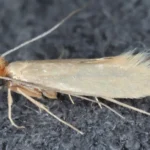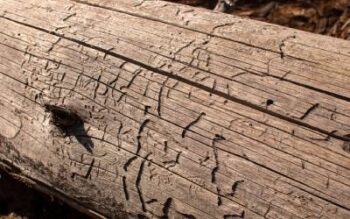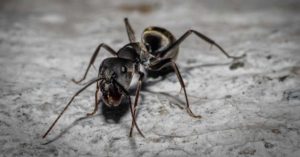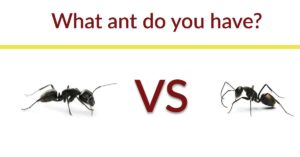
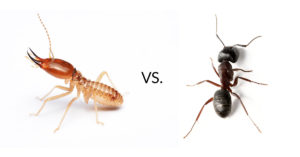 Two of the scariest insects for a homeowner to spot are termites and carpenter ants because both can do tremendous damage to your home. Yet the average homeowner doesn’t know the difference between the two. So, let’s review these two rivals.
Two of the scariest insects for a homeowner to spot are termites and carpenter ants because both can do tremendous damage to your home. Yet the average homeowner doesn’t know the difference between the two. So, let’s review these two rivals.
What Termites and Carpenter Ants Have in Common?
Both insects swarm in the spring to find mates. In both cases, though, swarms only happen in areas where they’re well established. So if termites or carpenter ants swarm in your house or on your property, you already have an infestation and need to have it taken care of right away to prevent more damage.
Also, both termites and carpenter ants can cause a great deal of damage to your home. These pests both like moist or damp wood. Even leaking pipes, air conditioning, and spigots can create ground that is wet enough, regularly enough to attract termites or carpenter ants who then invade the wood in your home – especially if those leaks made wood trim, siding, etc. wet as well.
Are those Termites or Carpenter Ants?
If you glance quickly, termites and carpenter ants can look alike. A closer examination, though, makes it clear they aren’t.
While both have the typical insect build of a head, thorax and abdomen, those three parts are more clearly discerned in the carpenter ant due in part to its narrow waist. For a termite, the thorax and abdomen can look like a single body part. Both insects come in varying sizes.
Carpenter ants and termites each have four wings. Termite wings, though, are of equal size and have a sort of elongated teardrop shape. The front wings of a carpenter ant are larger than their back wings and are slightly angular.
Termites also have straight antenna while carpenter ants have “elbow” antenna. This can be noticeable as the antenna come out perpendicular to their heads before turning roughly 90 degrees in front of them.
What’s the Difference Between Carpenter Ants and Termites?
Termites actually eat wood. They love the cellulose in wood, wood products and paper products, and will chew directly into healthy wood. Carpenter ants chew through wood to create tunnels and nests without actually eating the wood itself. Instead they push out the chewed wood, creating piles of what looks like sawdust near the exterior of the entrances to their nests.
Carpenter ants have very neat nests and tunnels. The walls of their tunnels are very smooth whereas termite tunnels are rough, ragged and lined with soil. Carpenter ants also clean up their nests, removing leftover food, dead ant bodies, etc. They’re also known for collecting resin, which they use to disinfect their nests.
Termites generally live in the ground and create mud tubes to move back and forth between their nests and their food source (the wood in your home). Carpenter ants live in the wood they chew to make nests.
Unlike other wood-chewing insects, such as termites, carpenter ants will build nests inside creosote-treated wood since they don’t ingest it. Generally, though, carpenter ants are attracted to wet or rotten wood because it’s easier to tunnel. Carpenter ants and termites can even chew through certain types of plastic. In fact, they regularly chew through PVC used in pool liners, filters, etc., costing homeowners a great deal of money.
Lastly, termites and carpenter ants are enemies who fiercely compete for the same type of environment and territory. Carpenter ants can actually kill and eat termites. In large enough numbers, carpenter ants can even destroy an entire termite colony.
Arrow Can Eliminate Termites and Carpenter Ants
Both carpenter ants and termites can cause severe damage to your home. If you suspect a problem, call or contact the professionals at Arrow Exterminating to identify and eliminate them. For more information, schedule a consultation today.

